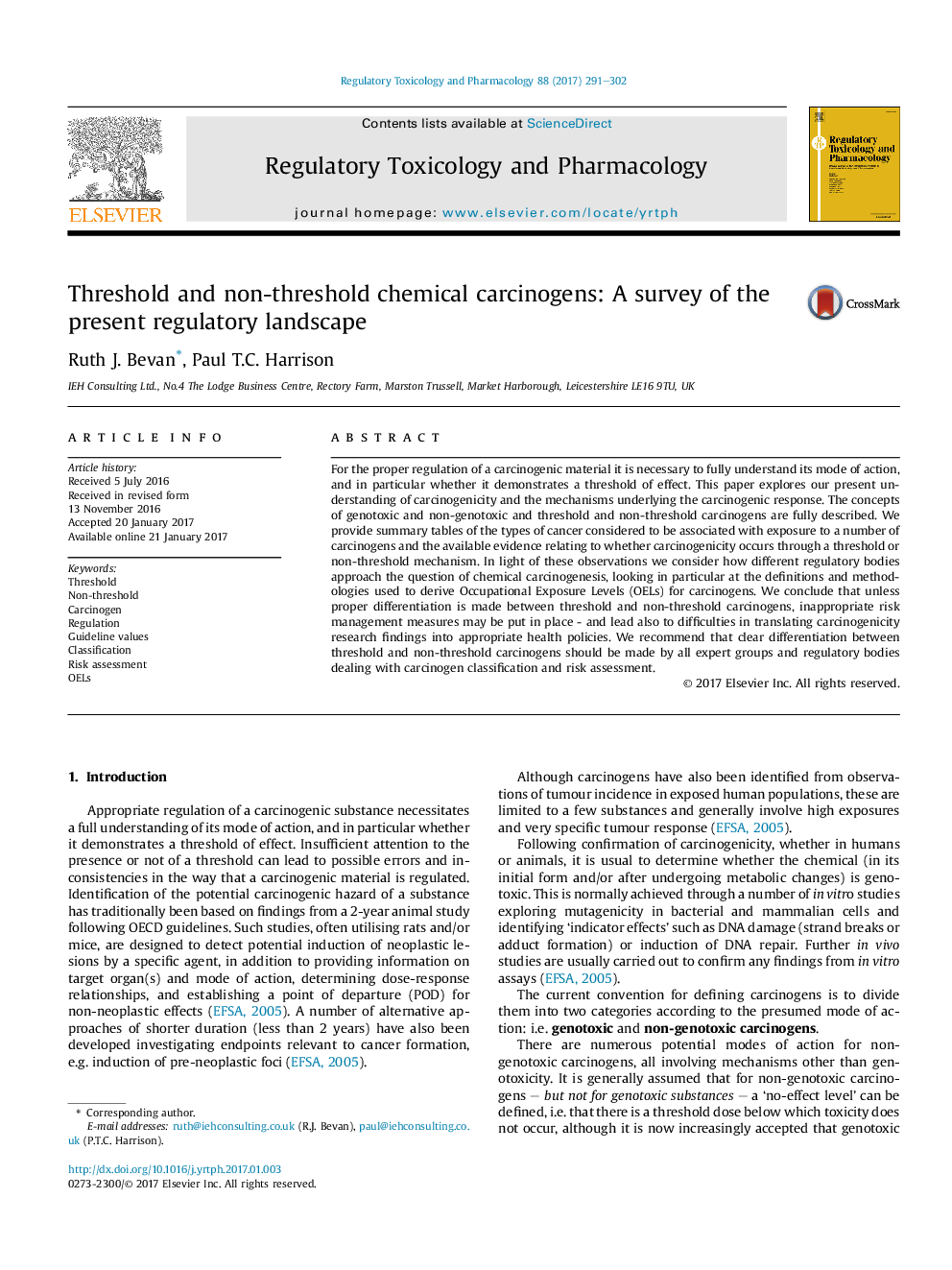| Article ID | Journal | Published Year | Pages | File Type |
|---|---|---|---|---|
| 5561160 | Regulatory Toxicology and Pharmacology | 2017 | 12 Pages |
â¢Consideration is given to how regulatory bodies approach chemical carcinogenesis.â¢Particular focus is given to derivation of OELs for carcinogens.â¢Identification of a threshold for some carcinogens is required for appropriate RM.
For the proper regulation of a carcinogenic material it is necessary to fully understand its mode of action, and in particular whether it demonstrates a threshold of effect. This paper explores our present understanding of carcinogenicity and the mechanisms underlying the carcinogenic response. The concepts of genotoxic and non-genotoxic and threshold and non-threshold carcinogens are fully described. We provide summary tables of the types of cancer considered to be associated with exposure to a number of carcinogens and the available evidence relating to whether carcinogenicity occurs through a threshold or non-threshold mechanism. In light of these observations we consider how different regulatory bodies approach the question of chemical carcinogenesis, looking in particular at the definitions and methodologies used to derive Occupational Exposure Levels (OELs) for carcinogens. We conclude that unless proper differentiation is made between threshold and non-threshold carcinogens, inappropriate risk management measures may be put in place - and lead also to difficulties in translating carcinogenicity research findings into appropriate health policies. We recommend that clear differentiation between threshold and non-threshold carcinogens should be made by all expert groups and regulatory bodies dealing with carcinogen classification and risk assessment.
